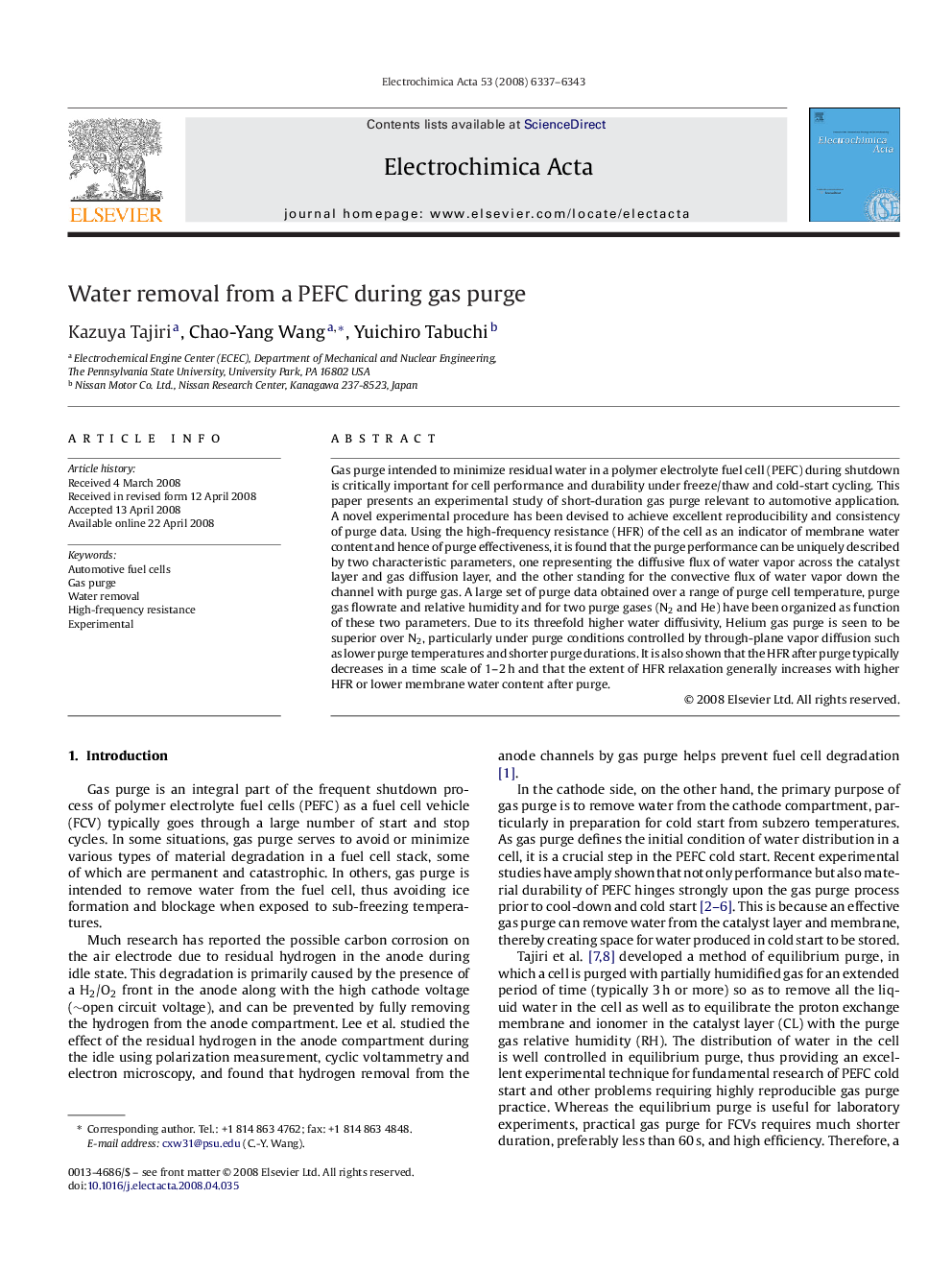| Article ID | Journal | Published Year | Pages | File Type |
|---|---|---|---|---|
| 195263 | Electrochimica Acta | 2008 | 7 Pages |
Gas purge intended to minimize residual water in a polymer electrolyte fuel cell (PEFC) during shutdown is critically important for cell performance and durability under freeze/thaw and cold-start cycling. This paper presents an experimental study of short-duration gas purge relevant to automotive application. A novel experimental procedure has been devised to achieve excellent reproducibility and consistency of purge data. Using the high-frequency resistance (HFR) of the cell as an indicator of membrane water content and hence of purge effectiveness, it is found that the purge performance can be uniquely described by two characteristic parameters, one representing the diffusive flux of water vapor across the catalyst layer and gas diffusion layer, and the other standing for the convective flux of water vapor down the channel with purge gas. A large set of purge data obtained over a range of purge cell temperature, purge gas flowrate and relative humidity and for two purge gases (N2 and He) have been organized as function of these two parameters. Due to its threefold higher water diffusivity, Helium gas purge is seen to be superior over N2, particularly under purge conditions controlled by through-plane vapor diffusion such as lower purge temperatures and shorter purge durations. It is also shown that the HFR after purge typically decreases in a time scale of 1–2 h and that the extent of HFR relaxation generally increases with higher HFR or lower membrane water content after purge.
